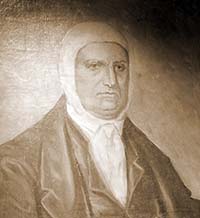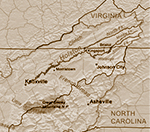from Encyclopaedia of the Presbyterian Church in the United States of America edited by Alfred Nevin
New Bethel Presbyterian Church, Sullivan County, Tennessee.
Amongst the earliest names associated with the origin of this church is that of the Rev. Joseph Rhea...
In this latter year, or about this, time, from the Piney Creek congregation, in Maryland, and from the contiguous portions of Pennsylvania, from what is now Adams county, then York, came many who had been members of Mr. Rhea’s congregation, or who had been his acquaintances, and made their homes on the Holston and on the Watauga, or passed on further as settlements advanced.
The tradition is, that in the year 1782 the Presbyterian families brought here through the influence of the Rev. Mr. Rhea were, by the Rev. Samuel Doak (elsewhere noticed in this volume), organized into a church, and the name New Bethel was probably suggested by him as a memorial of the Bethel Church in Virginia, in the bounds of which he had passed many of his early years.
It is believed that James Gregg, Sr., Francis Hodge, Sr., First; and John Alison, Sr., First; were the first ruling elders. It is not known how many members constituted the new organization...
About the time of the first period of Mr. Wood’s ministry the first enlargement of the church building was made. In the early history of the church the first building of logs was erected. This was used for many years as a school-house. The building was of contracted dimensions, and had a stone chimney at the east end. The pulpit was in the west end, around which the male portion of the congregation gathered. The women and children occupied the end near the chimney corner.
Soon after the revival of 1838 the increase of membership and of attendance required enlarged accommodation. An addition of hewn logs was joined to the west end, and the building was thus enlarged perhaps to twice its former capacity. The pulpit was now in the middle of the north side of the church. In the new part of the building, what would now be considered a very old fashioned stove began to do service in the cold wintry days. For about forty years the building just described answered the needs and served the purpose of the congregation in its public worship. The present commodious structure, an attractive country church, was completed but two or three ymirs ago.



